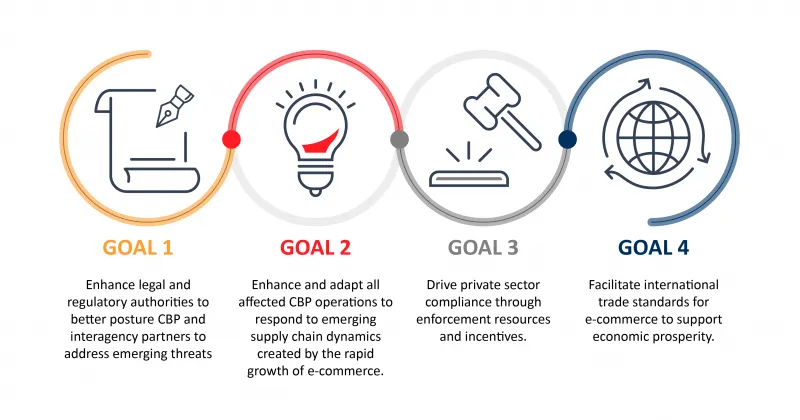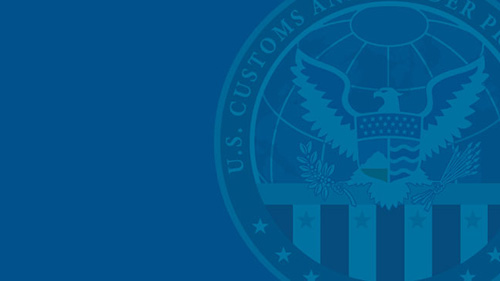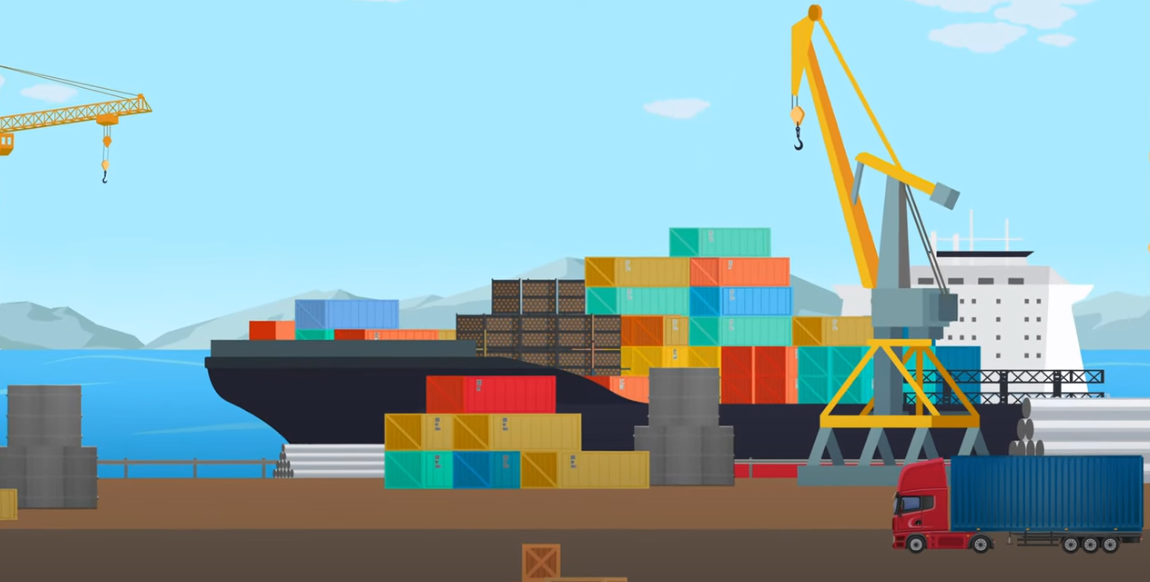E-Commerce Challenges
Prior to the boom in e-commerce, low-value shipments were largely confined to express consignment and international mail modes of entry, entering through hubs designed and staffed specifically for these types of imports. These low-value shipments now enter through all modes of transportation, at all ports of entry, flooding locations that have not previously processed these shipments.
As the rise in e-commerce has made it easier for consumers to have their goods delivered right to their door, bad actors are increasingly using this process to smuggle illicit goods or circumvent payment of duties, taxes, and fees. Criminal groups are exploiting the explosive growth of e-commerce to sell counterfeit goods and other illicit products through online platforms and are using the unprecedented growth in the number of low value shipments entering the United States to smuggle dangerous, illicit goods.
CBP recognizes this is a high-risk environment and has focused its resources to better determine which of the nearly 4 million low value shipments entering the U.S. each day are safe and can proceed to the consumer or purchaser, and which should be held and further examined.
De Minimis Statistics
De Minimis volume and values are based on the number of Bills of Lading (BOLs) and their declared value at the time of import. A BOL is a commercially available document issued by a carrier to a shipper, signed by the captain, agent, or owner of a vessel, furnishing written evidence regarding receipt of the goods, the conditions on which transportation is made (contract of carriage), and the engagement to deliver goods.
Section 321 BOL - De Minimis
The table below reflects De Minimis volumes and values spanning across a 3+ year timeline.
| Fiscal Year | 2020 | 2021 | 2022 | 2023 | 2024 | Q1 2025 |
|---|---|---|---|---|---|---|
| Total De minimis | 636.7 Million (M) | 771.5M | 685.4M | 1 Billion (B) | 1.36 Billion | 443.4M |
| Total De minimis Value | $67B | $43.5B | $46.5B | $54.5B | $64.6B | $9.2B |
| Total De minimis BOLs - Air | 539M | 661.1M | 542.7M | 880.2M | 1.1B | 376.3M |
| Total De minimis BOLs - Truck | 96.7M | 108.5M | 140.7M | 170.2M | 174.2M | 62.2M |
| Total De minimis BOLs - Vessel | 950 Thousand (K) | 1.7M | 1.9M | 2.6M | 3.7M | 4.7M |
| Total De minimis BOLs - Rail | 67K | 43K | 43.7K | 15.2K | 25K | 3.6K |
| Entry Type 86 BOLs | 122.1M | 344.8M | 333.7M | 623.1M | 948M | 293M |
| 321 Data Pilot | 60.1M | 169.5M | 161.6M | 162.5M | 160.6M | 48.9M |
| Total Express | 184.2M | 230.9M | 213.7M | 190.3M | 189M | 65.6M |
| Total Postal | 264.1M | 108.4M | 83.6M | 81.2M | 74.8M | 21.1M |
E-Commerce Strategy
To address E-Commerce challenges, CBP developed an E-Commerce Strategy, which focuses on four primary goals.

This strategy highlights private industry and foreign governments as key resources in CBP's continuous assessment of the e-commerce environment. The strategy includes efforts to educate the public and trade community to ensure they understand their responsibilities as importers to comply with customs regulations. Additionally, the strategy enforcement initiatives, such as streamlining enforcement processes affected by increasing e-commerce volumes, leveraging enforcement partnerships with partner government agencies and foreign governments, and improving data collection from CBP targeting systems and field personnel.
Examples of Unacceptable vs Acceptable Cargo Descriptions
19 CFR § 4.7a, 122.48a, 123.91, 123.92 and 128.21 require a precise, or specific, description of merchandise regardless of value. A precise cargo description is a description of an item that is clear and concise. The description should be in plain language and detailed enough to allow U.S. Customs to identify the size, shape and characteristics of the commodity. Only the cargo description should be included in the field of transmission. Superfluous information, not relevant to the commodity description e.g., personally identifiable information (PII), type of packaging, carrier disclaimers, etc., should not be transmitted in the commodity description field.
List of Unacceptable vs Acceptable Cargo Descriptions
Questions?
Contact the E-Commerce team at ecommerce@cbp.dhs.gov.





